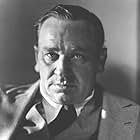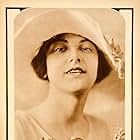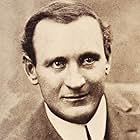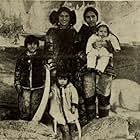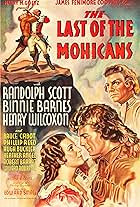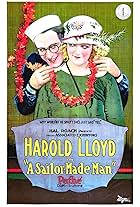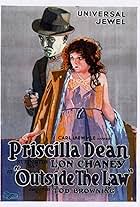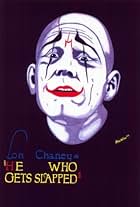IMDb RATING
6.7/10
1.5K
YOUR RATING
In the midst of the French and Indian War, the eldest daughter of a British officer develops an attraction towards an Indian ally who is the last living warrior of his tribe, the Mohicans.In the midst of the French and Indian War, the eldest daughter of a British officer develops an attraction towards an Indian ally who is the last living warrior of his tribe, the Mohicans.In the midst of the French and Indian War, the eldest daughter of a British officer develops an attraction towards an Indian ally who is the last living warrior of his tribe, the Mohicans.
- Awards
- 1 win
Alan Roscoe
- Uncas
- (as Albert Roscoe)
Theodore Lorch
- Chingachgook
- (as Theodore Lerch)
Jack McDonald
- Tamenund
- (as Jack F. McDonald)
Columbia Eneutseak
- Indian girl
- (uncredited)
Boris Karloff
- Indian
- (uncredited)
- Directors
- Writers
- All cast & crew
- Production, box office & more at IMDbPro
Storyline
Did you know
- TriviaThis film was selected to the National Film Registry, Library of Congress, in 1995.
- Quotes
Chingachgook: The palefaces are our friends. Go into the fort yonder and tell them of the danger that threatens.
- Alternate versionsIn 1993, Lumivision Corporation and the International Museum of Photography at George Eastman House, copyrighted a special edition which was distributed by Milestone Film & Video. It was tinted, had a music score composed and orchestrated by R.J. Miller and ran 73 minutes.
- ConnectionsFeatured in Fejezetek a film történetéböl: Amerikai filmtípusok - A western (1989)
Featured review
This is well photographed, as are most of the films I've seen from director Maurice Tourneur. The framing and composition of shots are apt, except occasionally when it is theatrical. Much of the action happens outside, which helps--freeing the camera and providing scenery. There are some nice lighting effects: use of low-key lighting, nighttime photography, the flickering light against a wall to represent candlelight and such. There are some silhouette shots, which seem to be a trademark in Tourneur's films. The tinting, too, adds to the beauty.
Some moments show a resemblance to D.W. Griffith and Billy Bitzer's work, such as "The Battle at Elderbush Gulch" and "The Birth of a Nation". There are the iris shots and actor's approaching the camera, both of which were popularized by Griffith and Bitzer. The battle scene at the fort is rather Griffith-like. Impressively innovative is the pan of the faces of Magua and Uncas and then them rushing towards the camera, as they begin fighting. The main pictorial schema for this film, and I think it's a good one, if not entirely original, is switching from distanced views to intimate shots, thus taking in the breadth of the scenic environment and concentrating on the story's action. This can be seen in the battle scenes, the cliff scene and pretty much every other important scene outside.
I've referred to this as Tourneur's film, but that's contentious. Clarence Brown, Tourneur's longtime assistant, is said to have directed most of the shooting, due to Tourneur being ill. In the early days without detailed shooting scripts, it's questionable as to how much of the picture was the conception and design of Tourneur, but Brown having worked under him, the issue may be moot. Perhaps, the poor use of the same set for fictionally different locations, made obvious by the successive cuts, in addition to other minor amateurish mistakes, can be blamed on inexperience.
Of worse error are Caucasians playing Indians, and the film's occasional condescension and racism, although it can be commended for its generally respectful treatment. As well, intertitles do replace some action and acting, as fellow commenter Sorsimus criticized. And, the story contrives three moments where Dark Hair faces the choice of replacing herself for Yellow Hair as Magua's captive. The film appears rather unpolished at times, as a result. These are rather minor, or commonplace, problems, though.
This is a promising early picture for Brown, at the peak of Tourneur's career. Tourneur, a pioneer of the medium, dealt with a variety of stories, so from there one can't characterize his body of work easily; it's in cinematography that a characteristic style of innovation and the use of the best of film grammar known can be seen. For Brown, his films would surpass the visual brilliance of his master, with pictures such as, say, "The Flesh and the Devil". Here, it seems he wisely worked from the style of Tourneur to create some very interesting photography.
Some moments show a resemblance to D.W. Griffith and Billy Bitzer's work, such as "The Battle at Elderbush Gulch" and "The Birth of a Nation". There are the iris shots and actor's approaching the camera, both of which were popularized by Griffith and Bitzer. The battle scene at the fort is rather Griffith-like. Impressively innovative is the pan of the faces of Magua and Uncas and then them rushing towards the camera, as they begin fighting. The main pictorial schema for this film, and I think it's a good one, if not entirely original, is switching from distanced views to intimate shots, thus taking in the breadth of the scenic environment and concentrating on the story's action. This can be seen in the battle scenes, the cliff scene and pretty much every other important scene outside.
I've referred to this as Tourneur's film, but that's contentious. Clarence Brown, Tourneur's longtime assistant, is said to have directed most of the shooting, due to Tourneur being ill. In the early days without detailed shooting scripts, it's questionable as to how much of the picture was the conception and design of Tourneur, but Brown having worked under him, the issue may be moot. Perhaps, the poor use of the same set for fictionally different locations, made obvious by the successive cuts, in addition to other minor amateurish mistakes, can be blamed on inexperience.
Of worse error are Caucasians playing Indians, and the film's occasional condescension and racism, although it can be commended for its generally respectful treatment. As well, intertitles do replace some action and acting, as fellow commenter Sorsimus criticized. And, the story contrives three moments where Dark Hair faces the choice of replacing herself for Yellow Hair as Magua's captive. The film appears rather unpolished at times, as a result. These are rather minor, or commonplace, problems, though.
This is a promising early picture for Brown, at the peak of Tourneur's career. Tourneur, a pioneer of the medium, dealt with a variety of stories, so from there one can't characterize his body of work easily; it's in cinematography that a characteristic style of innovation and the use of the best of film grammar known can be seen. For Brown, his films would surpass the visual brilliance of his master, with pictures such as, say, "The Flesh and the Devil". Here, it seems he wisely worked from the style of Tourneur to create some very interesting photography.
- Cineanalyst
- May 20, 2005
- Permalink
- How long is The Last of the Mohicans?Powered by Alexa
Details
- Release date
- Country of origin
- Languages
- Also known as
- El último Mohicano
- Filming locations
- Production company
- See more company credits at IMDbPro
- Runtime1 hour 13 minutes
- Color
- Sound mix
- Aspect ratio
- 1.33 : 1
Contribute to this page
Suggest an edit or add missing content

Top Gap
By what name was The Last of the Mohicans (1920) officially released in Canada in English?
Answer








